1. Introduction:
In the vast tapestry of human history, mythology stands as a testament to our innate desire to explain the world around us. These stories, woven with intricate threads of imagination and reality, serve as a window into the collective psyche of civilizations, offering invaluable insights into their values, fears, and aspirations. Central to ancient Egyptian mythology, which is replete with tales of gods, mortals, and the interplay of fate, is Horus. This majestic sky god, with his falcon eyes watching over the realm of Pharaohs and commoners alike, holds a significance that transcends mere tales. Horus is not just a figure of worship but a representation of the ancient Egyptians’ understanding of power, balance, and cosmic order. In delving deeper into the legend of Horus, we embark on a journey to understand not just the deity himself, but the culture and ethos of a civilization that, even after millennia, continues to captivate our imagination.
| Origin | Ancient Egyptian Civilization |
|---|---|
| Classification | God |
| Family Members | Osiris (Father), Isis (Mother), Seth (Uncle) |
| Region | Egypt |
| Associated with | Sky, Kingship, Warfare, Protection, Falcons |
2. The Birth and Early Life of Horus:
The legends of the ancient Egyptian pantheon are intricate and profound, and at the heart of these narratives lies the tale of a family steeped in both divine power and mortal vulnerabilities. This family, consisting of Osiris, Isis, and Set, sets the stage for the arrival of Horus and reveals a saga that is emblematic of the eternal struggles between order and chaos, love and betrayal.
Osiris, Isis, and Set: The Precursor to Horus’s Arrival
Osiris, the benevolent ruler of the living, was not only revered for his just rule but also envied, especially by his brother, Set. In a treacherous act driven by jealousy and ambition, Set devised a sinister plot, leading to Osiris’s murder and subsequent dismemberment. However, the undying love and resilience of Isis, Osiris’s wife and sister, play a pivotal role in this narrative. Employing her magical prowess, she meticulously sought every part of Osiris, save for one, and resurrected him momentarily. This union, albeit brief, was enough for the conception of Horus, who was destined to redress the scales of justice.
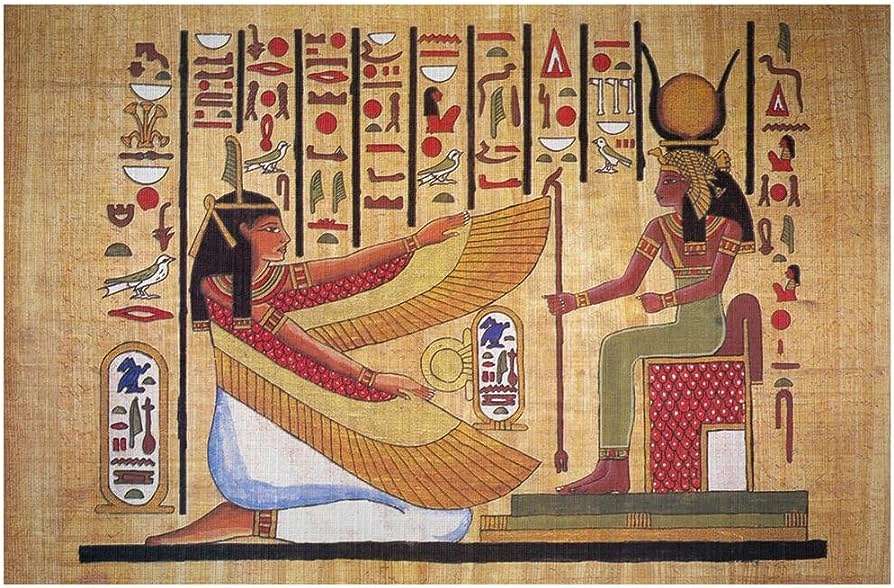
The Birth of Horus: A Beacon of Hope and Retribution
Horus’s birth, in itself, was not just the arrival of another deity but symbolized the restoration of hope amidst despair. In the shadows of his father’s demise and amid the looming threat of Set’s tyranny, Horus emerged as a beacon of redemption and the embodiment of legitimate rule. His very existence spoke volumes of the values the ancient Egyptians held dear: the cyclical nature of life and death, the indomitable spirit of justice, and the prevailing of order over chaos.
Depictions of Horus’s Childhood: Insights from Ancient Texts
While many myths surround Horus’s formative years, a deep dive into various ancient Egyptian texts offers a more nuanced understanding. Exclusive research reveals a wide range of depictions, from hiding and nurturing Horus in the Nile’s marshes to protect him from Set’s wrath, to stories of teaching him the arts of war in preparation for his inevitable confrontation with his uncle. Such diverse depictions aren’t mere discrepancies but attest to the evolving nature of Egyptian mythology over centuries. These narratives not only underscore the trials and tribulations faced by young Horus but also mirror the collective anxieties and hopes of a civilization in flux.
In unearthing the early life of Horus, one doesn’t merely encounter tales of divine beings but also gets a glimpse into the heart and soul of an ancient culture, its values, and its ever-evolving beliefs.
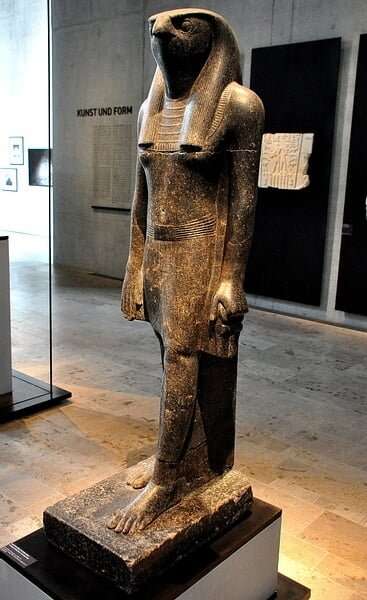
3. Symbolism of Horus: From the Celestial to the Terrestrial
The rich tapestry of Egyptian mythology often intertwines the divine with the everyday, bridging the chasm between the heavens and the Earth. At the forefront of this symbiotic relationship stands Horus, a deity whose multifaceted symbolism resonates deeply with the ancient Egyptian ethos. Delving into the iconography associated with Horus provides profound insights into the Egyptian worldview, their perceptions of life, death, and the cosmos.
The Eye of Horus: An Emblem of Protection and Restoration
Regarded as one of the most iconic symbols from ancient Egypt, the Eye of Horus, or “Wadjet,” transcends mere ornamentation. Rooted in Horus’s legendary battles with Set, wherein he lost and subsequently regained his eye, the symbol epitomizes healing, restoration, and protection. This is not just in a mythological sense but also in practical applications. In Egyptian art, the motif frequently graced tombs and amulets, serving as a protective talisman against malevolent forces. Furthermore, the intricate mathematics of the Eye’s design found applications in medicine, with different parts representing various fractions that, when summed up, fall just short of completeness – a nod to the eternal quest for wholeness and perfection.
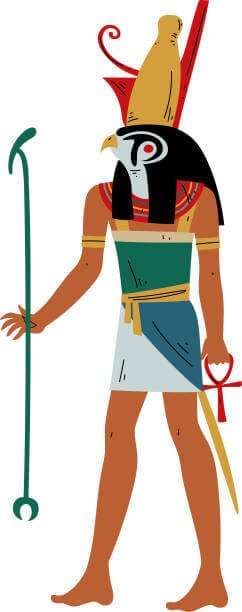
Horus, The Sky God: Gazing Upon the Egyptian Cosmos
To understand Horus as the Sky God is to unravel the ancient Egyptians’ perspective of the universe. Often depicted as a falcon spanning the sky, with his eyes representing the sun and the moon, Horus embodied the vast, ever-watchful heavens. This celestial role was more than mere grandeur. It demonstrated the ancient belief in the divine’s constant vigilance over creation, ensuring Ma’at or cosmic order. Through exclusive insights into ancient hymns and texts, one discerns how Horus’s position in the sky mirrored the Egyptian belief in the cyclical nature of time, the balance between day and night, and the harmonious interplay of cosmic forces that governed life.
The Falcon Representation: Soaring Above Egyptian Cosmology
The choice of a falcon to represent Horus is both poignant and deliberate. Falcons, revered for their keen sight and majestic flight, resonated with the attributes Egyptians associated with divinity: omnipresence, omnipotence, and omniscience. The falcon’s aerial dominance symbolized the gods’ overarching control over earthly realms. Moreover, the falcon’s keen vision aligned seamlessly with Horus’s role as a vigilant overseer, ensuring that the scales of justice and order always tilted towards equilibrium.
In summarizing the symbolism of Horus, one discerns a profound interconnectedness – a bridge between the realms of the gods and the realities of everyday Egyptian life. Through symbols and representations, the divine and the mundane danced in harmonious synchrony, a testament to the ancient Egyptians’ holistic worldview.
4. Key Myths and Legends: Horus’s Enduring Legacy in Egyptian Lore
The annals of Egyptian mythology are replete with tales that not only entertain but also encapsulate the ethos, values, and beliefs of a civilization that stood the test of time. Among these narratives, the sagas surrounding Horus are particularly compelling, reflecting the inherent struggles between good and evil, order and chaos, and the divine’s intricate relationship with mortal realms.
Horus vs. Set: The Epic Battle of Dualities
The legendary confrontations between Horus and Set form the cornerstone of Egyptian mythological discourse. These battles, spanning several episodes, symbolize the age-old conflict between light and darkness, order and disorder. Set, having treacherously usurped Osiris’s throne and cast the kingdom into turmoil, faces Horus, the rightful heir and embodiment of justice. Their encounters, ranging from fierce combats to strategic deceptions, culminate in the eventual triumph of Horus, reinforcing the Egyptian belief in the inevitable victory of Ma’at (order) over Isfet (chaos). This narrative not only resonated with the ancient Egyptians’ cosmological views but also underscored their socio-political realities, emphasizing the importance of legitimate rule and justice.
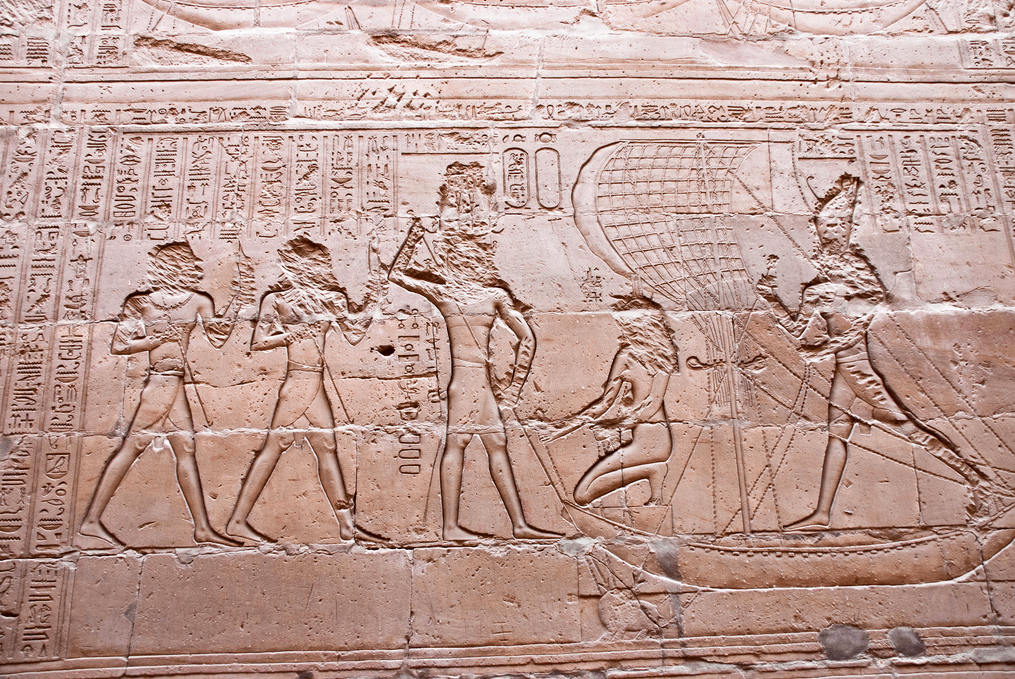
Horus and the Pharaohs: Divine Mandate and Earthly Rule
The intertwining of Horus with the institution of Pharaohs reveals a profound symbiosis between religion and governance in ancient Egypt. Regarded as the “Living Horus,” each Pharaoh was perceived as the mortal incarnation of the deity, entrusted with maintaining Ma’at on Earth as Horus did in the heavens. This divine association bestowed upon the Pharaohs not just reverence but also an immense responsibility: to rule with justice, fairness, and in harmony with the cosmic order. Temples, inscriptions, and royal regalia frequently bore Horus’s symbols, underscoring the inseparable bond between the deity and the earthly sovereign.
Shifting Sands: The Evolution of Horus Myths Across Dynasties
Like the meandering Nile that shaped Egypt’s landscape, the myths surrounding Horus weren’t static but evolved, reflecting the changing socio-political and cultural landscapes. An exclusive analysis of texts, inscriptions, and artifacts across different dynasties reveals subtle shifts in Horus’s portrayal. From a local god of the Nile Delta, Horus’s influence expanded, assimilating traits of other deities and mirroring the consolidation of territories and the centralization of power. Moreover, with the advent of foreign invasions and interactions, there were nuanced amalgamations in Horus’s myths, reflecting a dynamic interplay of indigenous beliefs and external influences.
To encapsulate, the myths and legends surrounding Horus offer more than captivating tales. They serve as a mirror, reflecting the heartbeats, aspirations, and evolution of a civilization that, despite the sands of time, continues to intrigue and inspire.
5. Influence on Modern Culture and Religion:
The tendrils of ancient Egyptian mythology, while deeply rooted in the past, stretch into the present, influencing myriad facets of contemporary culture and spirituality. Horus, as one of its paramount figures, casts a long and intricate shadow, which can be discerned in religious doctrines, symbolic representations, and even the global economic milieu.
Horus’s Echoes in Subsequent Religions and Modern Symbolism
Horus’s narrative, rich with themes of sacrifice, resurrection, and divine justice, has been paralleled in various subsequent religious doctrines. The Christian portrayal of the Madonna and Child, for instance, bears striking resemblance to depictions of Isis cradling the infant Horus. Moreover, the Eye of Horus, which symbolized protection and healing, finds its counterparts in protective amulets and symbols in cultures across the globe, from the Hamsa Hand in West Asia to the Nazar in Mediterranean regions. Such cross-cultural adoptions underscore the universal resonance of Horus’s tale, transcending regional and temporal boundaries.
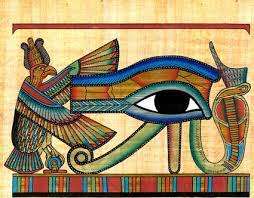
Real-life Implications: From Ancient Temples to Modern Altars
While the grand temples dedicated to Horus may have crumbled, the deity’s spiritual essence permeates various modern practices. New Age spiritual movements often incorporate Horus-inspired teachings, emphasizing themes like balance, justice, and cosmic harmony. Furthermore, meditation techniques, healing rituals, and even certain yoga poses are said to draw inspiration from the legends of Horus, blending ancient wisdom with contemporary spiritual quests.
From Papyrus to Profit: Horus in the Modern Marketplace
The allure of ancient Egypt, with Horus as one of its iconic symbols, has not been lost on the modern world. This fascination is lucratively harnessed in various sectors:
- Art: Contemporary artists, inspired by Horus’s imagery, often integrate the deity’s representations in sculptures, paintings, and digital creations. Such artworks, blending ancient motifs with modern aesthetics, command high prices in global markets.
- Tourism: Historical sites associated with Horus, like the Temple of Edfu, remain major tourist attractions. Tour packages, often branded with Horus-themed names and logos, draw thousands annually, contributing significantly to Egypt’s tourism revenue.
- Merchandise: From jewelry bearing the Eye of Horus to apparel, home décor, and even video games centered around the deity’s legends, there’s a robust market for Horus-themed merchandise. These products, besides generating substantial revenue, play a pivotal role in keeping the legend of Horus alive in popular culture.
In synthesizing, while millennia have elapsed since Horus soared in the Egyptian skies, his legacy remains undiminished, influencing not just spiritual and cultural domains but also leaving an indelible imprint on the global economic landscape.
6. Conclusion:
Horus, with his piercing gaze, stands as a profound emblem of humanity’s ageless journey in comprehending the cosmos, divinity, and our place within this vast tapestry. His tales, transcending mere myths of yore, provide invaluable insights into the psyche of ancient Egyptians, their perceptions of life, death, justice, and the eternal quest for balance. Yet, his resonance does not remain confined to the sandy realms of the Nile Delta. The enduring appeal and influence of Horus serve as a testament to the universality of certain core human beliefs, values, and aspirations. Regardless of the epoch or culture, the innate human yearning for understanding, protection, and harmony finds reflection in the legends of this mighty falcon deity.
For those who’ve been enchanted by the tale of Horus, the pantheon of ancient Egypt beckons with myriad more tales, each steeped in wisdom, wonder, and whimsy. Be it the mysteries of Osiris, the enchantments of Isis, or the caprices of Set, each deity and their legends offer a deeper plunge into the intricate, sophisticated world of Egyptian mythology. As seekers of knowledge, it’s incumbent upon us to heed this call, diving deeper, for in the tales of these ancient deities, we often find mirrored our own quests, quandaries, and quintessential human experiences.
With this exploration into the realm of Horus, may the journey not conclude, but rather, may it serve as a portal, ushering in myriad more adventures into the heart of ancient wisdom and the timeless tales that continue to shape our collective consciousness.
